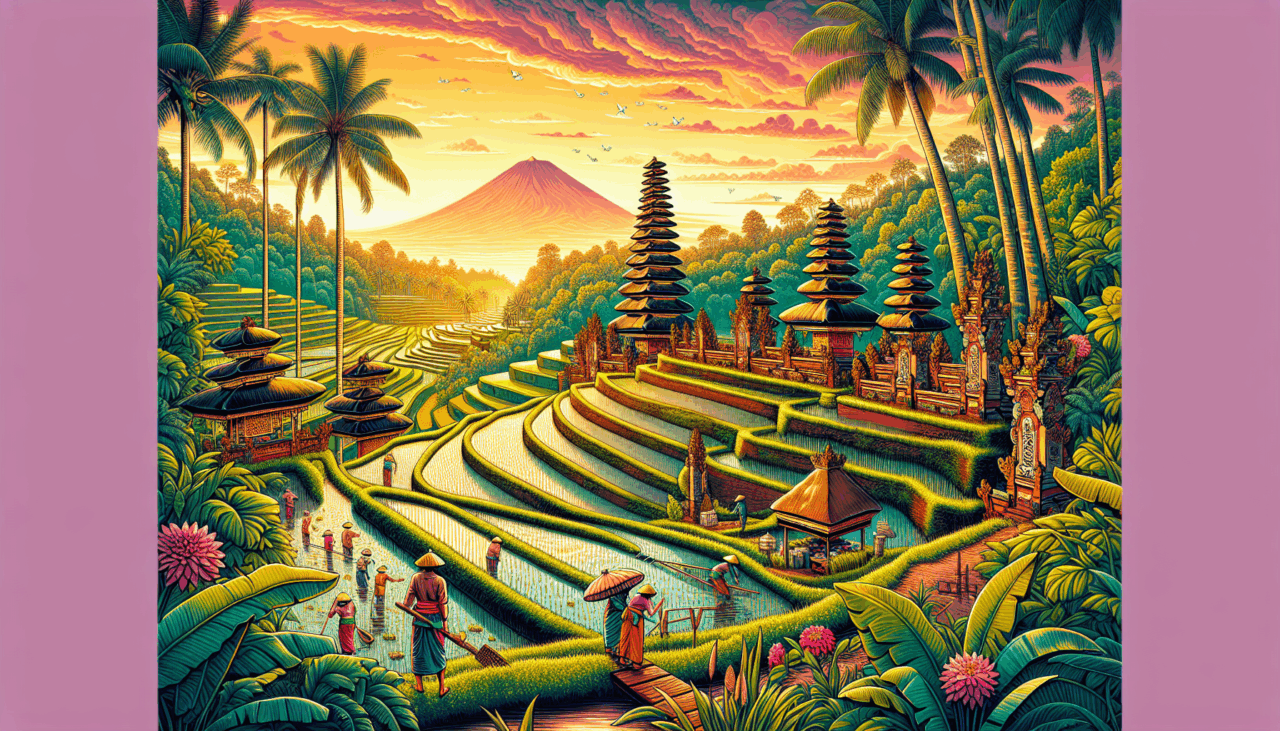Discovering Bali’s Subak Irrigation System: The Ancient Waterways That Shape the Island’s Soul
By Jayantha
Imagine weaving your way through emerald-green rice paddies, the morning mist dancing over terraces like a silk scarf, your footsteps accompanied by the gentle symphony of flowing water. This isn’t just a postcard-perfect vision—it’s the living, breathing heart of Bali. And at the center of it all lies the island’s ancient secret: the Subak irrigation system.
What Is Subak? The Ancient Pulse of Bali
For most travelers, Bali conjures up visions of sandy beaches and surfboards, but there’s a powerful, centuries-old story waiting just beyond the tourist trail. Subak is more than a clever way to water crops—it’s a spiritual, communal, and ecological masterpiece that’s survived since the 9th century. In fact, it’s so remarkable that UNESCO crowned it a World Heritage treasure in 2012.
At its core, Subak is a network of canals, tunnels, and weirs, hand-carved by generations of Balinese farmers. But dig deeper (pun intended), and you’ll find that Subak is also a philosophy—a harmonious blend of people, nature, and gods. It’s the reason those iconic rice terraces at Tegalalang and Jatiluwih are so lush, perfectly sculpted, and, well, Instagrammable.
A Dance Between Humans and Nature
What makes Subak totally unique is the way it connects the spiritual with the practical. Picture this: water flows down from Bali’s sacred volcanoes, like Mount Batukaru, and is carefully channeled through intricate bamboo pipes and stone aqueducts. The flow isn’t random. Instead, it’s managed by local farmer cooperatives, who hold regular meetings in water temples (yes, actual temples just for water!) to decide how it will be shared.
A little fun fact for my fellow Sri Lankans: this reminds me of our own ancient tanks and canals in the Dry Zone, where water isn’t just a resource, but a blessing. In Bali, the farmers believe Dewi Danu, the goddess of water, watches over their fields. Every splash and trickle is a sign of her grace.
A Living Heritage: Subak in Action
Let’s get real—I’m not just here to drop history on you. Subak is something you have to experience. One morning, I found myself at the edge of the Jatiluwih Rice Terraces, camera in hand, shoes muddy and heart full. The terraces stretched in wave-like patterns, mirrored by the clouds above. As I watched an elderly farmer adjust a bamboo sluice gate, he flashed a wide grin and beckoned me over.
He explained (with a mix of Bahasa, gestures, and laughter) how each family in the village gets their share of water, and how disputes are settled with community meetings rather than angry words. It’s democracy, Bali-style—equal parts respect, ritual, and teamwork.
Why Subak Matters Today
In an age of fast food and faster living, Subak is a gentle rebellion. It’s slow, sustainable, and deeply rooted in community values. Without it, Bali’s rice terraces would be dust, and the cultural heartbeat of the island would fade. Subak isn’t just about agriculture—it’s about keeping a way of life alive.
For adventurous souls craving authenticity, visiting the Subak system is a must-do. Skip the rushed tourist tours and instead, walk or cycle through the terraces of Sidemen or Jatiluwih. Chat with local farmers, try a hand at planting (be prepared to get gloriously muddy!), or join a Subak ceremony at a water temple. You’ll carry home more than photos—you’ll carry stories.
Tips for Young Travelers: How to Experience Subak Up Close
- Go early: Sunrise over the rice terraces is pure magic, and you’ll have the place almost to yourself.
- Respect the land: Stay on marked paths—those terraces are someone’s livelihood, not just a selfie spot.
- Connect with locals: A smile and a few words of Bahasa Indonesia (“Terima kasih!”) go a long way.
- Try a Subak homestay: Live like a local, eat fresh rice, and soak up the rhythms of rural Bali.
- Join a guided walk: Many villages offer eco-tours led by farmers who know every twist and turn of the Subak network.
Closing Thoughts: The Spirit of Subak
Bali’s Subak system is more than an irrigation marvel—it’s a living testament to what happens when humanity lives in harmony with nature and spirit. For me, wandering those watery labyrinths wasn’t just an adventure, it was an invitation: to slow down, to listen, to be part of something bigger.
So, next time you’re in Bali, ditch the beach (just for a day, promise!) and follow the water’s path. You’ll discover the soul of the island—and maybe a bit of your own.
Keep exploring, stay curious, and remember: every drop tells a story.

Comments (0)
There are no comments here yet, you can be the first!